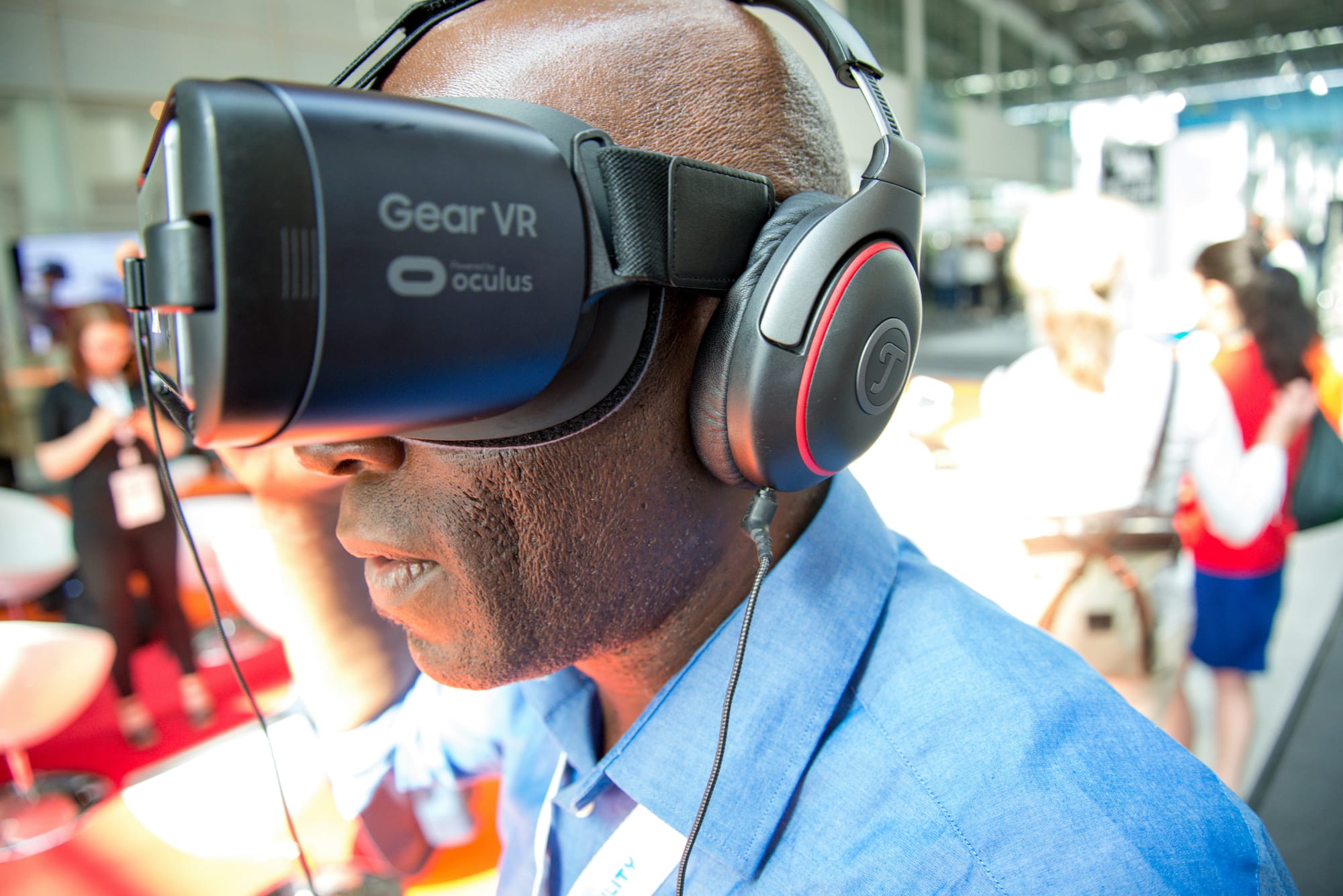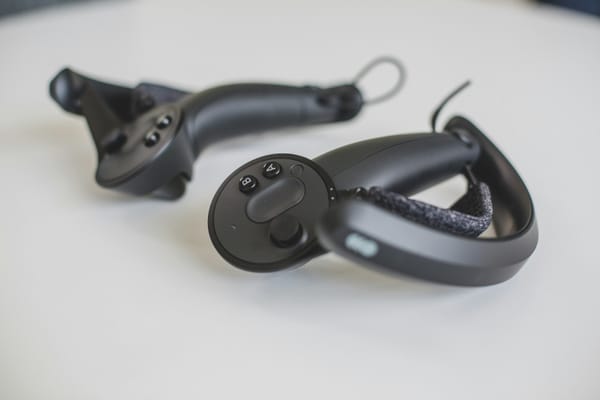22 Practical Tips for Working In VR & Free Apple Vision Pro Alternative for Meta Quest
Dive into the future of work! Explore the wonders of working in VR. Enhance collaboration and redefine your workspace for ultimate productivity.

Immersing yourself in the world of virtual reality can revolutionize your work life by offering a dynamic and innovative virtual workspace. From virtual meetings to collaborative projects, the realm of working in VR opens endless possibilities for enhanced productivity and creativity. Explore the advantages of this cutting-edge technology and discover how working in VR can transform the way you work and interact with colleagues, all within a virtual environment that transcends physical limitations.
Table of Contents
- What Is The Allure Behind Working In VR?
- 22 Practical Tips for Working In VR
- Complete Step-by-Step Guide On How To Use Fluid's Free Apple Vision Pro Alternative for Meta Quest
- Get The Apple Vision Pro Experience for A Fraction of The Cost With Fluid
What Is The Allure Behind Working In VR?

Working in VR offers a truly immersive experience that transports you to a virtual world where the possibilities are endless. Whether you're collaborating with colleagues, attending virtual meetings, or working on creative projects, VR technology creates a sense of presence that traditional tools simply can't match. The ability to interact with digital content in 3D space enhances productivity and creativity, making tasks more engaging and enjoyable.
Enhanced Collaboration
VR breaks down the barriers of physical distance, allowing teams to collaborate in real-time regardless of their location. Virtual workspaces enable seamless communication and interaction, fostering a sense of connection and teamwork among remote colleagues. By leveraging VR technology, individuals can engage in brainstorming sessions, design reviews, and training programs as if they were in the same room, leading to more efficient and effective collaboration.
Productivity Boost
The immersive nature of VR can lead to a significant boost in productivity by minimizing distractions and enhancing focus. With the ability to create personalized virtual workspaces tailored to individual preferences, users can optimize their environment for maximum efficiency. Whether it's organizing virtual screens, tools, and resources or customizing the layout of the workspace, VR empowers users to design their ideal work setup for peak performance.
Innovative Applications
Beyond traditional work tasks, VR opens up a world of innovative applications across various industries. From virtual design and prototyping in architecture and engineering to immersive training simulations in healthcare and education, the potential for VR in the workplace is vast. By harnessing the power of VR technology, professionals can explore new ways to visualize data, interact with complex models, and engage with content in ways that were previously unimaginable.
The Flexibility of Fluid in XR on Meta Quest
Fluid allows you to create a flexible workspace in XR on the Meta Quest. With Fluid, you can place big screens anywhere in augmented reality. Fluid enables flexible workspaces and entertainment, cloud gaming, and much more. The most game-changing feature of all: Fluid allows you to create a virtual workstation with VR/AR using the Meta Quest, with virtually any screen size. You can create your own $5,000+ work setup in VR/AR, and take it wherever you’d like to.
Fluid solves remote working and remote work collaboration, long-distance relationships, remote teams, small startups with distributed co-founders, gamers that want a portable VR/AR gaming set, students, and much more. Turn your VR headset into a spatial computer for free today with Fluid. Break free from physical screens, watch content on a big screen from anywhere, get into a deep flow state by being immersed in your work, and create a flexible workspace anywhere with Fluid.
Related Reading
- Vr Workplace
- Augmented Reality In The Workplace
- Vr Work From Home
- Vr Training
- Vr Design
- Vr Programs
- Vr In Business
- Vr Marketing
- Vr Conferencing
- Vr Meetings
- Virtual Reality Business Applications
22 Practical Tips for Working In VR

1. Implement Effective Communication Strategies in VR Workplaces
In VR workplaces, it is crucial to establish effective communication strategies to ensure seamless collaboration among team members. Utilize features such as spatial audio, hand gestures, and virtual whiteboards to enhance communication in virtual environments. Encourage team members to use clear and concise language to convey ideas effectively.
2. Foster a Creative and Collaborative Environment in VR
Encourage creativity and collaboration within your virtual workspace by providing tools for brainstorming, idea sharing, and project development. Implement virtual tools such as 3D modeling software, collaborative whiteboards, and immersive brainstorming sessions to foster innovation and teamwork among team members.
3. Utilize VR for Team Building and Training Purposes
Leverage VR technology for team building exercises and training programs to enhance team cohesion and skill development. Create immersive team-building activities, virtual workshops, and realistic simulations to improve team dynamics and boost skill proficiency among team members.
4. Establish Clear Goals and Objectives for VR Projects
Define clear goals and objectives for VR projects to ensure alignment and focus among team members. Set specific milestones, deadlines, and deliverables to track progress and measure success. Encourage team members to set individual goals that contribute to the overall project objectives.
5. Encourage Continuous Learning and Skill Development in VR
Promote a culture of continuous learning and skill development within your VR workplace by providing access to training resources, workshops, and virtual courses. Encourage team members to explore new VR tools, techniques, and technologies to expand their skill set and stay updated with industry trends.
6. Implement Effective Time Management Techniques in VR Work
Optimize time management in VR work by setting priorities, establishing deadlines, and utilizing productivity tools. Encourage team members to schedule virtual meetings, allocate time for focused work sessions, and track progress using virtual task boards or project management tools.
7. Promote Work-Life Balance in Virtual Environments
Encourage work-life balance among team members working in VR by setting boundaries, establishing clear work hours, and promoting self-care practices. Create virtual relaxation spaces, mindfulness sessions, and wellness activities to support the well-being of team members.
8. Enhance Virtual Presentation Skills for Effective Communication
Develop virtual presentation skills among team members to enhance communication and engagement during virtual meetings and presentations. Provide training on how to effectively use gestures, body language, and eye contact in VR to deliver impactful presentations and convey ideas with clarity.
9. Utilize VR for Data Visualization and Analysis
Leverage VR technology for data visualization and analysis to enhance decision-making and problem-solving processes. Use immersive data visualization tools, interactive dashboards, and 3D modeling software to explore complex datasets, identify patterns, and gain valuable insights.
10. Foster Inclusivity and Diversity in Virtual Teams
Promote inclusivity and diversity within virtual teams by creating an environment where all team members feel valued, respected, and included. Encourage open communication, celebrate diverse perspectives, and actively work towards building a culture of inclusivity within the virtual workspace.
11. Encourage Innovation and Experimentation in VR Projects
Foster a culture of innovation and experimentation within VR projects by encouraging team members to think outside the box, explore new ideas, and take calculated risks. Create a safe space for creativity, experimentation, and learning from failures to drive innovation and growth within the team.
12. Implement Virtual Team Building Activities and Social Events
Organize virtual team-building activities, social events, and networking sessions to foster team cohesion and strengthen relationships among team members. Host virtual happy hours, game nights, and collaborative projects to create a sense of community and belonging within the virtual workspace.
13. Establish Virtual Etiquette and Code of Conduct in VR Workplaces
Define virtual etiquette guidelines and a code of conduct for team members to adhere to during virtual interactions and meetings. Establish rules for respectful communication, active listening, and professional behavior to maintain a positive and inclusive virtual environment.
14. Promote Collaboration and Knowledge Sharing in VR Environments
Encourage collaboration and knowledge sharing among team members in VR environments by providing platforms for sharing ideas, best practices, and resources. Facilitate virtual workshops, peer-to-peer learning sessions, and cross-functional collaborations to foster a culture of continuous learning and growth.
15. Utilize Immersive VR Environments for Product Prototyping and Design
Utilize immersive VR environments for product prototyping, design iterations, and user testing to streamline the product development process. Leverage 3D modeling software, virtual reality simulations, and interactive prototypes to gather feedback, iterate quickly, and create user-centric products.
16. Enhance Team Productivity with Virtual Task Management Tools
Improve team productivity in VR work by utilizing virtual task management tools, project boards, and collaborative platforms to streamline task allocation, progress tracking, and team coordination. Empower team members to prioritize tasks, set deadlines, and communicate effectively to enhance overall productivity.
17. Promote Accessibility and Inclusivity in Virtual Workspaces
Ensure accessibility and inclusivity within virtual workspaces by providing accommodations for team members with disabilities, diverse learning styles, and different communication preferences. Implement features such as closed captioning, accessibility settings, and assistive technologies to create an inclusive environment for all team members.
18. Implement Security Measures to Protect Confidential Data in VR
Prioritize data security and confidentiality in VR workplaces by implementing encryption protocols, secure access controls, and data privacy measures to protect sensitive information. Educate team members on cybersecurity best practices, phishing awareness, and secure data handling to mitigate risks and safeguard confidential data.
19. Establish Virtual Team Norms and Collaboration Guidelines
Define virtual team norms and collaboration guidelines to establish clear expectations for team behavior, communication protocols, and work processes within the virtual workspace. Encourage team members to adhere to established norms, respect boundaries, and contribute positively to the team dynamic.
20. Encourage Peer Feedback and Performance Reviews in VR
Promote a culture of feedback and continuous improvement in VR workplaces by encouraging peer feedback, self-assessments, and performance reviews. Provide opportunities for team members to give and receive constructive feedback, set performance goals, and reflect on their professional growth within the virtual environment.
21. Foster a Culture of Creativity and Innovation in VR Work
Cultivate a culture of creativity and innovation within VR work environments by encouraging experimentation, risk-taking, and creative problem-solving. Provide opportunities for team members to pitch new ideas, explore unconventional solutions, and collaborate on innovative projects to drive growth and success within the team.
22. Prioritize Mental Health and Well-being in Virtual Workspaces
Prioritize mental health and well-being in virtual workspaces by offering resources for stress management, mental health support, and work-life balance. Encourage team members to take breaks, practice self-care, and seek support when needed to maintain overall well-being and performance in virtual work environments.
Turn your VR headset into a spatial computer
Fluid allows you to create a flexible workspace in XR on the Meta Quest. With Fluid, you can place big screens anywhere in augmented reality. Fluid enables flexible workspaces and entertainment, cloud gaming, and much more. The most game changing feature of all: Fluid allows you to create a virtual workstation with VR/AR using the Meta Quest, with virtually any screen size. You can create your own $5,000+ work setup in VR/AR, and take it wherever you’d like to.
Fluid solves remote working and remote work collaboration, long distance relationships, remote teams, small startups with distributed cofounders, gamers that want a portable VR/AR gaming set, students, and much more. Turn your VR headset into a spatial computer for free today with Fluid. Break free from physical screens, watch content on a big screen from anywhere, get into a deep flow state by being immersed in your work, and create a flexible workspace anywhere with Fluid.
Related Reading
- Virtual Reality In Healthcare
- Virtual Reality In The Classroom
- Virtual Reality In Architecture
- Virtual Reality Therapy
- Teams Vr
- Vr Collaboration
- Vr Educational Apps
- Vr Data Visualization
- Virtual Reality Presentation
- Vr Prototyping
- Working In Vr
- Enterprise Virtual Reality
- Immersed Vs Virtual Desktop
- Vr Productivity Apps
- Virtual Reality For Training Employees
- Virtual Reality Business Applications
- Benefits Of Virtual Reality In Business
Complete Step-by-Step Guide On How To Use Fluid's Free Apple Vision Pro Alternative for Meta Quest
Watch these videos to learn more about what Fluid is:
Watch this step-by-step guide to learn how to use Fluid's Free Apple Vision Pro Alternative for Meta Quest:
Get The Apple Vision Pro Experience for A Fraction of The Cost With Fluid
Fluid is a groundbreaking tool that unleashes the true potential of XR technology, particularly on the Meta Quest platform. By seamlessly integrating virtual and augmented reality, Fluid empowers users to create dynamic workspaces that transcend physical limitations.
Creating Flexible Workspaces
Fluid redefines the concept of a traditional workspace by enabling users to place large screens anywhere in augmented reality. This flexibility allows individuals to design their ideal work environment, tailored to their unique preferences and needs. Whether it's collaborating with remote teams, attending virtual meetings, or simply getting work done, Fluid provides a versatile and customizable workspace that adapts to the user.
Elevating Entertainment and Gaming
Beyond work applications, Fluid opens up a world of entertainment possibilities in XR. From cloud gaming to immersive media consumption, users can enjoy a cinematic experience on a virtual big screen, all within the confines of their Meta Quest headset. Gamers can transform their VR/AR setup into a portable gaming hub, offering unrivaled flexibility and convenience.
Empowering Remote Collaboration
One of the most transformative features of Fluid is its ability to facilitate remote collaboration. Whether it's connecting with colleagues, coordinating with distributed teams, or nurturing long-distance relationships, Fluid bridges the gap between physical distances. By creating virtual workstations that mimic real-life setups, users can engage in seamless collaboration regardless of their location.
Enabling Productivity and Immersion
By leveraging Fluid, users can immerse themselves in their work like never before. The ability to create a virtual workstation with any screen size cultivates a deep sense of focus and productivity, enabling individuals to enter a state of flow. Breaking free from physical screens, users can fully immerse themselves in their tasks, leading to enhanced creativity and efficiency.
Unleashing Potential Across Diverse Sectors
Fluid's impact extends far beyond traditional work environments. It caters to a wide range of users, including students seeking enhanced learning experiences, small startups with distributed founders, and individuals looking to enhance their overall productivity and well-being. The versatility of Fluid makes it a transformative tool that transcends boundaries and empowers users across various sectors.
Embracing the Future of Work
In essence, Fluid transforms the Meta Quest into a spatial computing powerhouse, offering limitless possibilities for users to redefine how they work, collaborate, and engage with content. By embracing Fluid, individuals can break free from conventional constraints, embrace flexibility and innovation, and unlock a new era of virtual productivity and creativity.



